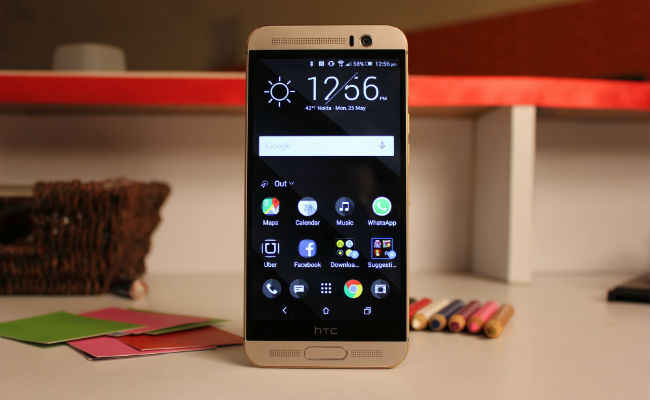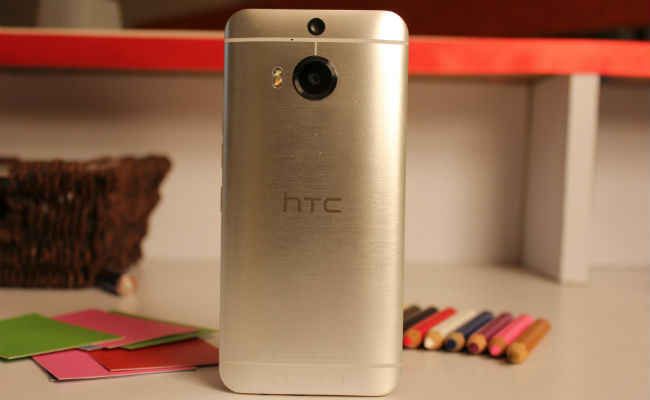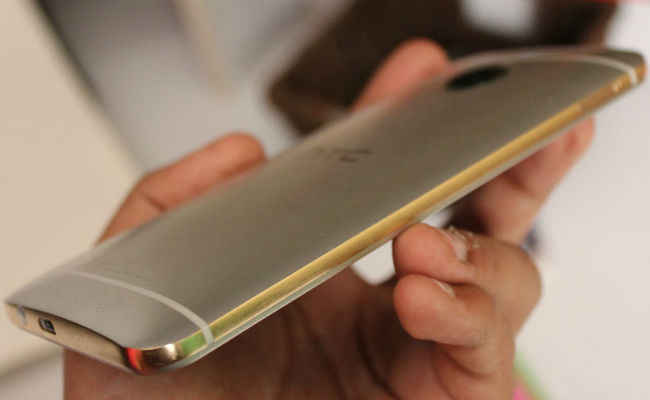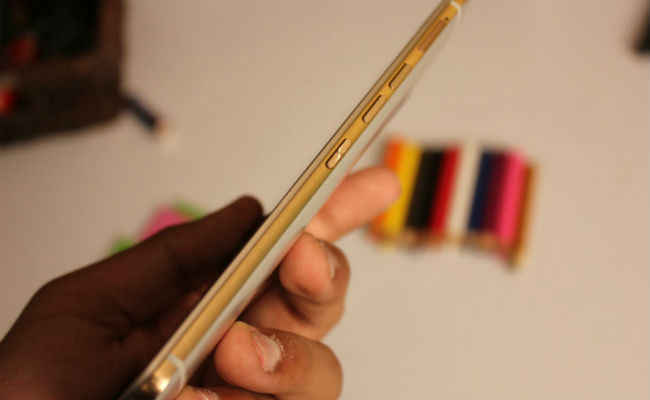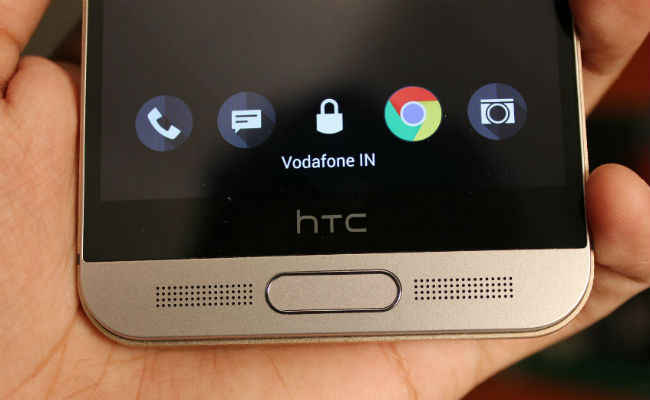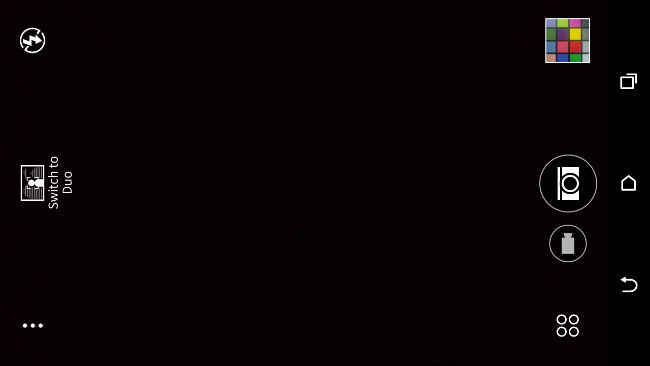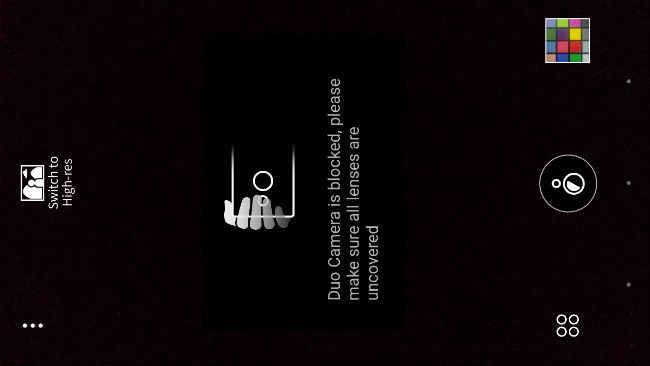HTC One M9+ Review : A veteran playing catch up
The only thing the HTC One M9+ has over its competitors is its looks and build, which is not enough to shell out 50k for this device. If you're going to spend this kind of money for a flagship device, there's a better performer in the Galaxy S6.
If you look at the specs, you'll probably say this is the best smartphone HTC has made till date. Beyond what’s on paper though, the M9+ tells a story of a veteran, trying to catch up in a whole new world. Why do I say so? Read ahead for the HTC One M9+ review.
Build and Design
My mind says it’s the same design as the M8 before this, but my gut says it’s different. It’s only when you take the HTC One M9+ in your hand that you realise that it’s actually quite different from the One M8. The dual-tone metal finish looks like two pieces of metal put together. There’s distinct break between the front and back of this smartphone. The rear cover of the M9+ actually seems like the phone has been put inside a metal case.
There are two things here, one in the age where even Samsung and Apple are overhauling their flagship designs, HTC is simply being stubborn in sticking to what is a tried and tested formula. Secondly, even though the HTC One M9+ is a stunner and it does look different from the One M8, if you’ve ever heard HTC speak passionately about its design philosophies, you would be justified to expect more of the company.
It goes without saying that this is a solidly built smartphone. The overdose of metal ensures that, and the only plastic you’ll find are the bands on the back and sides for the antenna to function properly.
While that covers the looks part, there’s a distinct failure in this design. The fingerprint sensor just doesn’t fit into HTC’s overall philosophy for the M9+. The One M9+ in a way justifies the iPhone 6’s design. Apple’s quest for symmetry makes the iPhone 6 bigger than it needs to be, because the round TouchID sensor takes up a lot of space at the bottom, requiring an equal amount to be delegated on the top as well.
HTC and Samsung on the other hand chose the oval TouchID Sensor, presumably to solve this symmetry issue. This though comes at the cost of functionality. Both Samsung and HTC’s fingeprint sensors function less precisely than Apple’s. This is simply because of their shape. The phones require you to cover the entire sensor with your finger which just does not feel right when it comes to these narrow oval buttons. What you’re being asked to do is to place your finger on the sensor horizontally, and this is exactly what you don’t do in regular use.
This opens up the phone to two vulnerabilities. The first is of course in the fact that the fingerprint sensor often doesn’t record your fingerprint, failing to unlock the phone. The second, and possibly the more important one, is that in trying to tilt your finger, you compromise on the grip that you have on your phone. Sure, you’ll be extra careful with a phone that costs over 50k, but you will also want it to have no such design flaws won’t you? At least I do. HTC wants to stick to its old design, but add new functions, and the two just don’t fit together, at least not as easily as it wants them to.
Display
The 5.2 inch QHD display is another example of what I said in the beginning. With the M9 being criticised for its 1080p display, HTC had to put in a 2K display fast, and it did with the M9+. In doing so, it seems to have compromised on the overall quality of the display. The Super LCD3 display has been amongst the most balanced displays till date, striking a balance between the warm AMOLEDs of Samsung and slightly cooler panels from some other manufacturers.
The One M9+ has a display that is very sharp, like most other 2K displays, but there’s a distinct pink-ish tinge on the display when seen from certain angles. While this could of course be a problem with my review unit alone, it’s not something one would want on a flagship smartphone. I will be updating this review if it turns out to be a unit specific issue.
UI
HTC Sense 7 does not have much in terms of changes over Sense 6, but that’s not something you should expect from HTC anyway. The company has unbundled its UI over the years, meaning it can update specific sections of its UI instead of one big overhaul.

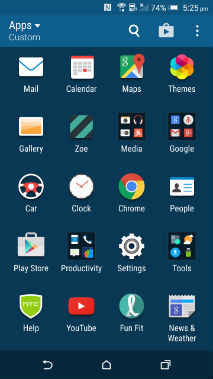
The only real update in Sense 7 on the M9+ is the HTC Home widget, which is essentially an app management widget. This takes stock of your work and home WiFis and arranges apps accordingly, based on where you are. It also suggests apps, but I didn’t find any that were useful to me.
Performance
The real reason why I say HTC is stuck playing catch up though is the MediaTek X10 Helio processor inside. I must confess, I expected a lot out of this processor, especially after getting a feel of the LeTV Le1 smartphone back in April. The MediaTek X10 Helio has been making big news following Qualcomm’s Snapdragon 810 fiasco. Being one of the bigger players in the market, HTC had the option to launch a second device with a MediaTek alternative.
The phone to beat here is of course the Samsung Galaxy S6 or S6 Edge, with their Exynos 7 Octa processors. While the HTC One M9+ doesn’t heat up as fast or as easily as the Galaxy S6 variants, it also doesn’t perform at the same level. Rather, the performance is somewhere between the Snapdragon 805 and the Exynos 7 Octa. The M9+ does well on multi-core tests, beating the Galaxy S6 Edge. The single core performance though is not quite the same, which is a double edged sword. You don't want a flagship device to fail here, on the other hand, a flagship device would ideally be meant for more multi-core usage than single core. In addition, the single core performance is still enough for regular usage, it is only in benchmark numbers that you'll see the difference.
AnTuTu's complete system tests though point out a different story. It makes one thing pretty clear, that as a pure performer, the MediaTek Helio X10 is right up there with the best in the market and ahead of Qualcomm's Snapdragon 810 processor.
The real surprise in performance though is in the Power VR Rogue G6200 GPU. The M9+ is no match against the Galaxy S6, being closer to the Moto Turbo and Nexus 6. The performance in gaming isn't particularly bad, but it isn't the powerhouse that the S6 Edge turned out to be. You'll be able to play resource intensive games, and the M9+ won't throttle the processor for about 15 minutes. The good thing here is that under controlled temperatures, of about 23 degrees, the M9+ doesn't heat up very easily. It takes the phone about 20 minutes to go up to 40 degrees, which is a very good sign.
Battery
Benchmark numbers aside, the real problem with the performance lies in the battery. On a loaded device, being used as a daily driver, the battery drops by about 13% after 15 minutes of gaming. On a bare bones device, with less background activity, this remains at around 8-9%.
In our battery tests, the One M9+ lasts about 5 hours, about a fourth of the time clocked by the Moto Turbo. 5 hours is also the time clocked on Geekbench 3’s battery test (for going from 100% to 1%), while PC Mark for Android takes 4 hours 8 minutes for the phone to go from 80% to 20%.
During real world usage, using the phone as a daily driver, it lasts for at most 12 hours. This with barely 15 minutes of gaming and lots of text messaging, coupled with 5 phone calls some social networking. I got to gauge the performance even more by taking it along with me to a recent trip overseas. Since my phone was silent all day and void of data connections, the battery would last me longer, but the HTC One M9+ still could not get me through the whole day, topping out at 17 hours at best.
Camera
Megapixel counts don’t determine camera performance. HTC knows that as well as anyone else, but it still bumped up the pixel count on its rear camera to 20MP with the M9+, adding a 2MP Duo camera to go along with it.
Frankly, the Duo Camera on the HTC One M9+ doesn’t really serve any purpose. After all, how many times does anyone really need to shift focus from the foreground to the background? It gets old really fast. You will be taking most of your images in the ‘high-res’ mode that the camera offers, and there it will fail you on default settings. You can get some measure of control using other functions, but that doesn’t bring it anywhere close to the Galaxy S6.
In the flagship market, the HTC One M9+ has a camera that is mediocre at best, just like the Moto Turbo. It overexposes images in bright sunlight, while under fluorescent lights images come out with a hue that can ruin them, as you will see in the colour chart image in the album above. The camera is passable at best, which is really not saying much.
On the front, HTC put its 4MP ultrapixel camera, which used to be the primary camera on its earlier flagships. While this is good, the camera is pre-programmed to make images very soft, which means faces will look nice but very unreal, with smudged colours and less sharpness. The camera isn't bad per se, but it will really come down to personal choice.
Bottomline
The HTC One M9+ has its ups and downs, but it isn't the outright performer that the Galaxy S6 Edge is. The only real advantage it has over Samsung's flagship is that it looks better, but there again, it isn't exactly a fresh design. The MediaTek X10 Helio does well in regular tasks, but the GPU performance isn't good enough for a flagship device that costs over 50k. So, should you buy the HTC One M9+? Frankly, the answer is no. The camera doesn't come anywhere close to either the Galaxy S6 and the M9+'s battery is disgraceful for a flagship smartphone. You would be spending your money much better if you buy the Galaxy S6.
The One M9+ tries its best to catch up to what's selling in the market right now, shedding HTC's stubbornness over 1080p displays but continuing with the same old design. It's a disappointment, especially for HTC fans, who have always been appreciative of the company's prowess in making Android devices.
A point to be noted here is that the OnePlus One, or hopefully even the upcoming OnePlus 2 and other mid-ranged flagships, remain better value for money flagships than the M9+, Samsung Galaxy S6 Edge and the LG G4. The companies really need to bring all this power at a lower price point if they want to keep up with that competition.
5% Off on HTC One M9 Plus at Rs. 50,999

